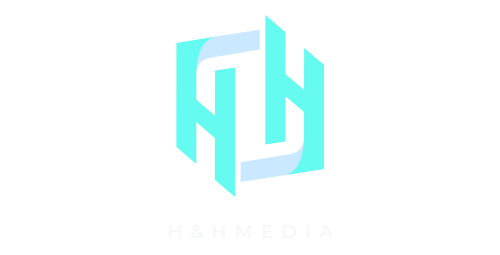In the ever-evolving landscape of digital marketing, businesses of all sizes are seeking effective ways to reach their audience without breaking the bank. As we enter 2024, budgeting for digital advertising remains a crucial concern for many. Fortunately, there are numerous cost-effective strategies that can help businesses maximize their advertising efforts while keeping expenses in check. Here’s a guide to navigating digital advertising on a budget in 2024.
1. Leverage Social Media Advertising
Social media platforms like Facebook, Instagram, Twitter, and LinkedIn offer robust advertising options that can fit various budgets. With precise targeting capabilities, you can reach specific demographics based on interests, location, and behavior. Here are a few tips for maximizing your social media ad spend:
- Start Small: Begin with a modest budget to test different ad formats and messages. Analyze performance and gradually increase your spend on successful campaigns.
- Utilize Retargeting: Implement retargeting ads to re-engage users who have previously interacted with your brand. This can lead to higher conversion rates at a lower cost.
- Engage with Organic Content: Combine paid ads with organic social media efforts. Regularly post engaging content to build your audience organically, enhancing the effectiveness of your paid campaigns.
2. Optimize Your Website for SEO
Investing in search engine optimization (SEO) can significantly reduce your long-term advertising costs. By improving your organic visibility, you can attract traffic without relying solely on paid ads. Here are some cost-effective SEO strategies:
- Keyword Research: Use free tools like Google Keyword Planner or Ubersuggest to identify relevant keywords. Incorporate these into your website content, blog posts, and meta descriptions.
- Quality Content Creation: Develop high-quality, valuable content that addresses your audience’s questions or pain points. This can improve your organic rankings and drive traffic without ongoing ad spend.
- Local SEO: Optimize your Google My Business listing and encourage customer reviews to enhance your visibility in local searches, driving more foot traffic to your business.
3. Utilize Email Marketing
Email marketing remains one of the most cost-effective ways to reach your audience. Building a targeted email list allows you to directly communicate with potential customers. Here’s how to make the most of your email marketing efforts:
- Segment Your Audience: Divide your email list into segments based on demographics, purchase history, or engagement levels. This allows for personalized messaging that resonates with different groups.
- Create Valuable Content: Send newsletters, promotions, and informative content that adds value to your subscribers. This fosters engagement and encourages conversions.
- Automate Your Campaigns: Use email automation tools to streamline your campaigns. Set up welcome emails, abandoned cart reminders, and follow-ups to nurture leads without additional effort.
4. Explore Content Marketing
Content marketing is a powerful way to build brand awareness and drive traffic without heavy spending on ads. By creating valuable content, you can attract and engage your audience organically. Consider these strategies:
- Start a Blog: Regularly publish blog posts that address your audience’s interests or concerns. This can improve SEO and establish your brand as an authority in your industry.
- Repurpose Existing Content: Transform existing content into various formats—such as infographics, videos, or podcasts—to reach different audiences without creating new material from scratch.
- Collaborate with Influencers: Partner with micro-influencers who align with your brand. They often have engaged audiences and can promote your products at a lower cost than larger influencers.
5. Focus on Analytics and Optimization
Tracking and analyzing your advertising campaigns is crucial for maximizing your budget. Utilize analytics tools to measure performance and make data-driven decisions. Here are some tips:
- Set Clear KPIs: Define key performance indicators (KPIs) that align with your goals, such as website traffic, conversion rates, or return on ad spend.
- A/B Testing: Experiment with different ad creatives, headlines, and targeting options to determine what resonates best with your audience. Optimize your campaigns based on these insights.
- Regularly Review Performance: Continuously monitor your campaigns and adjust your strategies based on performance data. This proactive approach can help you allocate your budget more effectively.
6. Consider Pay-Per-Click (PPC) Advertising
While PPC can be costly, it can also be a cost-effective strategy when managed properly. Platforms like Google Ads allow you to set daily budgets and only pay for actual clicks. Here’s how to optimize your PPC campaigns:
- Use Long-Tail Keywords: Target specific, long-tail keywords that have lower competition but higher intent. This can lead to lower cost-per-click (CPC) rates and better conversions.
- Optimize Landing Pages: Ensure that your landing pages are relevant to your ads and optimized for conversions. A well-designed landing page can significantly improve your ROI.
- Monitor and Adjust Bids: Regularly review your bids and adjust them based on performance. Focus on keywords that drive conversions rather than those that merely generate clicks.
Conclusion
Digital advertising on a budget is entirely achievable with the right strategies in place. By leveraging social media, optimizing for SEO, utilizing email marketing, exploring content marketing, focusing on analytics, and considering PPC, businesses can effectively reach their audience without overspending. As 2024 unfolds, embracing these cost-effective approaches will not only maximize your advertising budget but also help your business thrive in a competitive digital landscape. Start implementing these strategies today, and watch your brand grow without breaking the bank!






